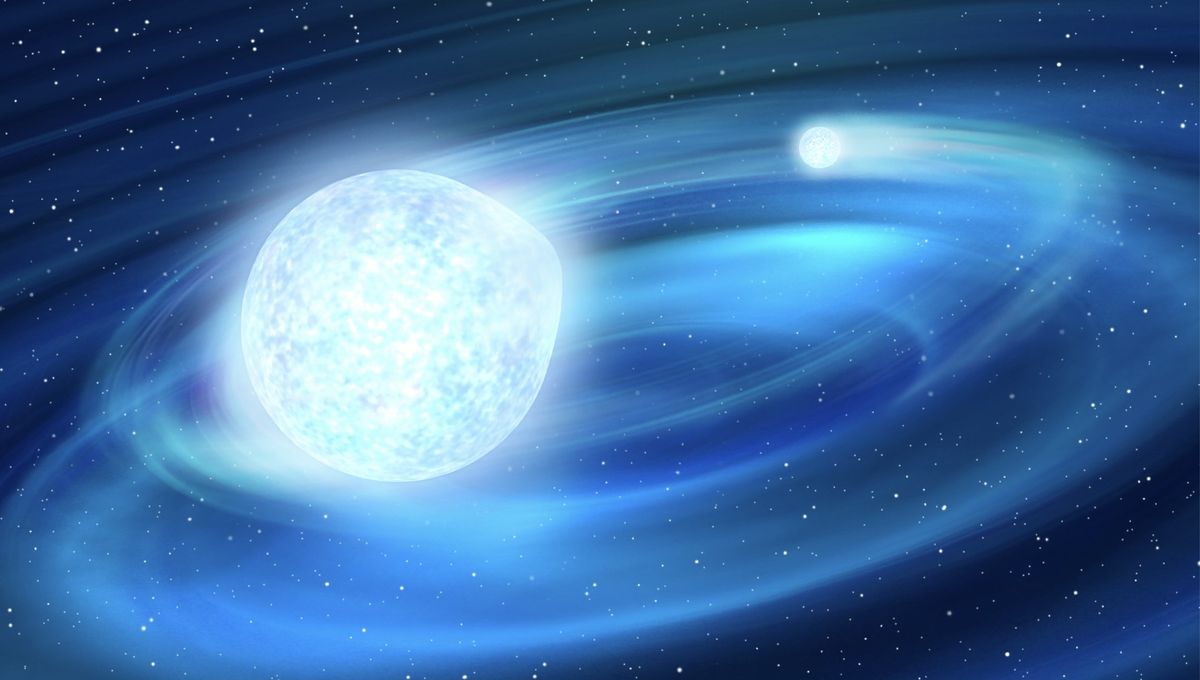
Astronomers have reported an incredible stellar discovery. Actually, they’ve reported two incredible discoveries: they have found the smallest star ever and it orbits its companion with the smallest known period for binary stars at just 20.5 minutes.
The star is part of a binary system that has been called TMTS J0526 and is located 2,760 light-years from Earth. J0526B is a hot subdwarf star and we are not exaggerating when we say it is tiny. It has a radius just seven times that of Earth. To compare, Jupiter’s radius is 11.2 times Earth’s own, Saturn’s is 9.5, and Neptune’s is four times Earth’s. This is the smallest star ever discovered by volume, and yet it is still a star. Packed into that small volume is about one-third of the mass of the Sun so this tiny star weighs about 350 times that of Jupiter.
The heavier object, J0526A, is a white dwarf that weighs about 74 percent of the Sun. It is rich in carbon and oxygen, indicating what kind of star it evolved from. White dwarfs are the destiny of stars like the Sun. Not massive enough to go supernova, the small stars evolve into red giants before shedding their outer layers, exposing an extremely dense degenerate core in a volume not much bigger than our planet.
The two objects orbit each other once every 20.5 minutes, the shortest known orbital period of any binary star system.
The observations using the Tsinghua University-Ma Huateng Telescope for Survey (TMTS) back up some theoretical views that the lightest subdwarfs are the product of a different evolution compared to the slightly heavier ones – although we are still talking about stars less than half the mass of the Sun. Finding more of these objects could better clarify how they came to be so extreme.
TMTS began observing in 2020 and by the end of 2023 had studied over 27 million stars. In the catalog, dozens of short-period sources have been found but TMTS J0526 was the shortest. This was confirmed by following up observations using the Keck I telescope in Hawai’i and the Gran Telescopio Canarias (GTC) located in La Palma.
The observations suggest that the white dwarf is actually deforming the subdwarf star with every orbit. The tidal gravitational pull stretches the small, bright star, affecting its brightness. It’s this change that was caught by the telescopes. In the future, this motion might be caught by space-based gravitational wave observatory LISA. They are too subtle for our current detectors.
The study is published in Nature Astronomy.
Source Link: Smallest Star Ever Discovered And It's Only A Tiny Bit Bigger Than Earth